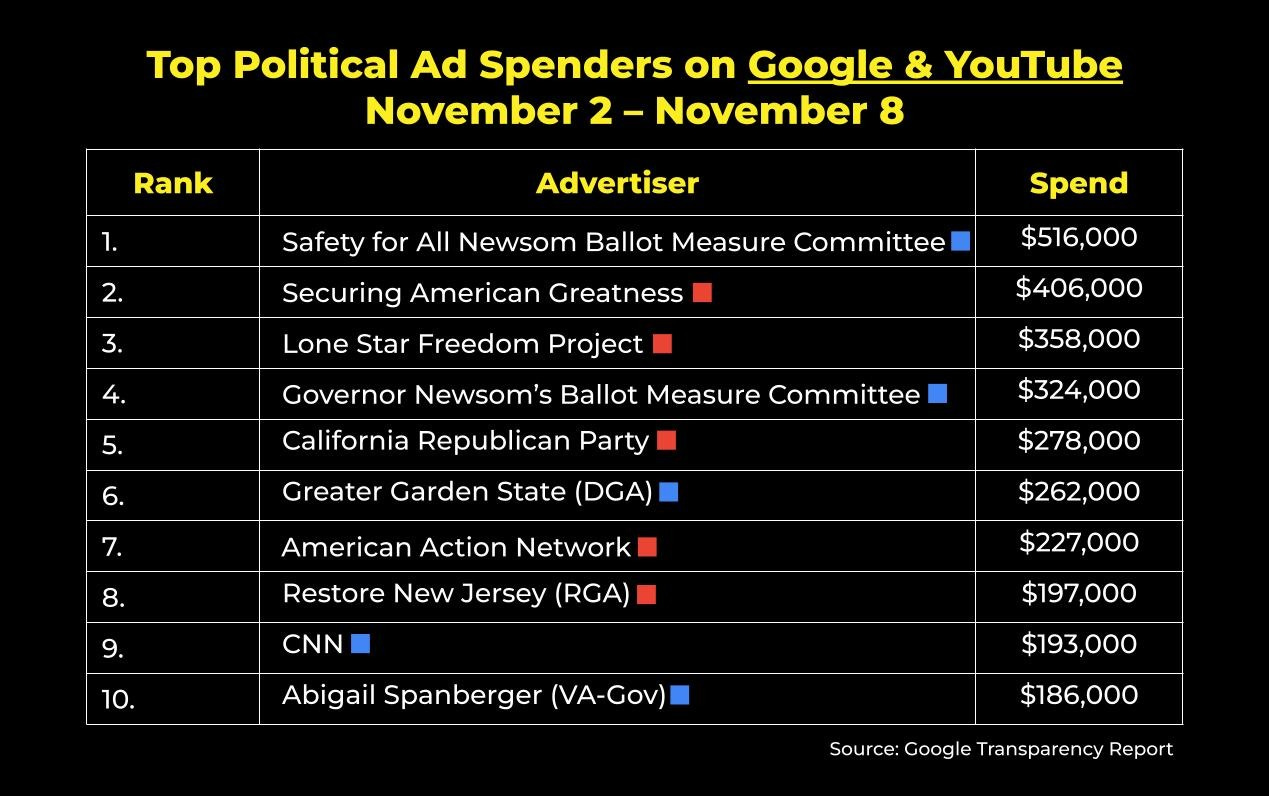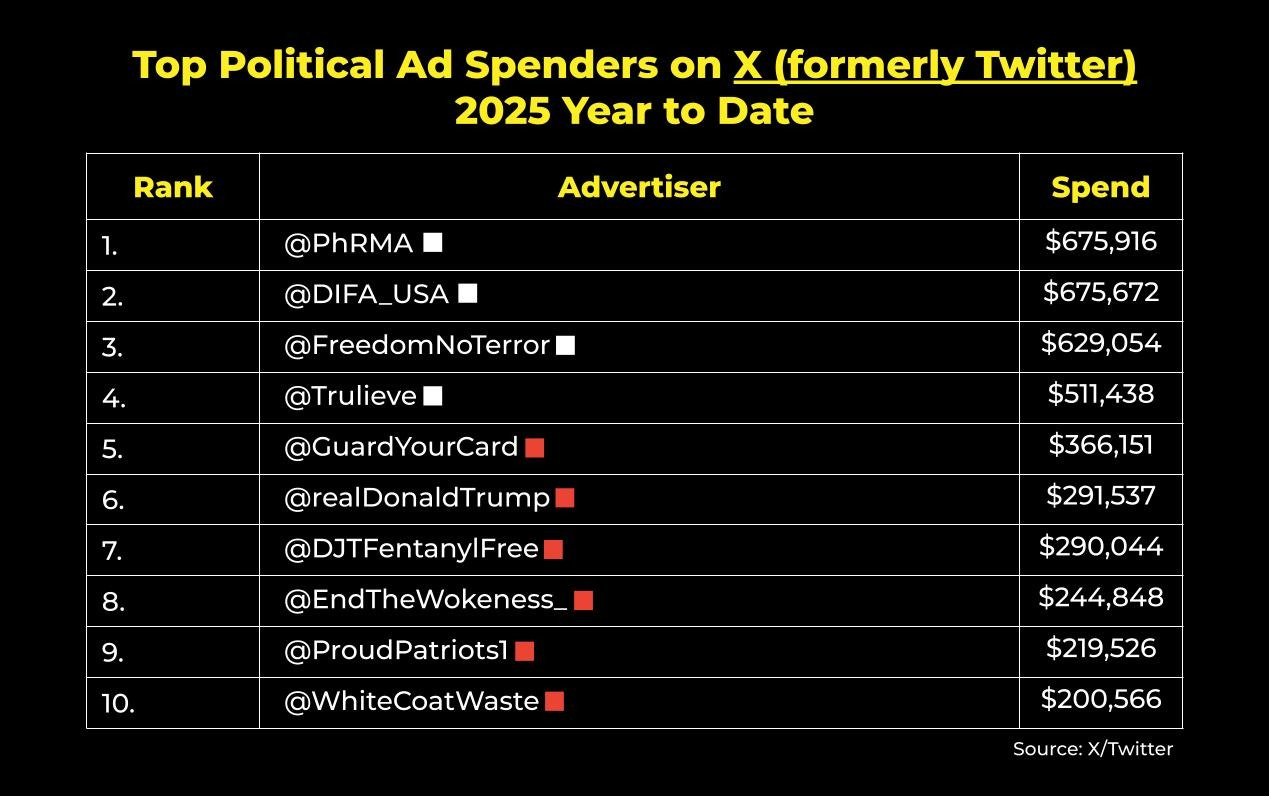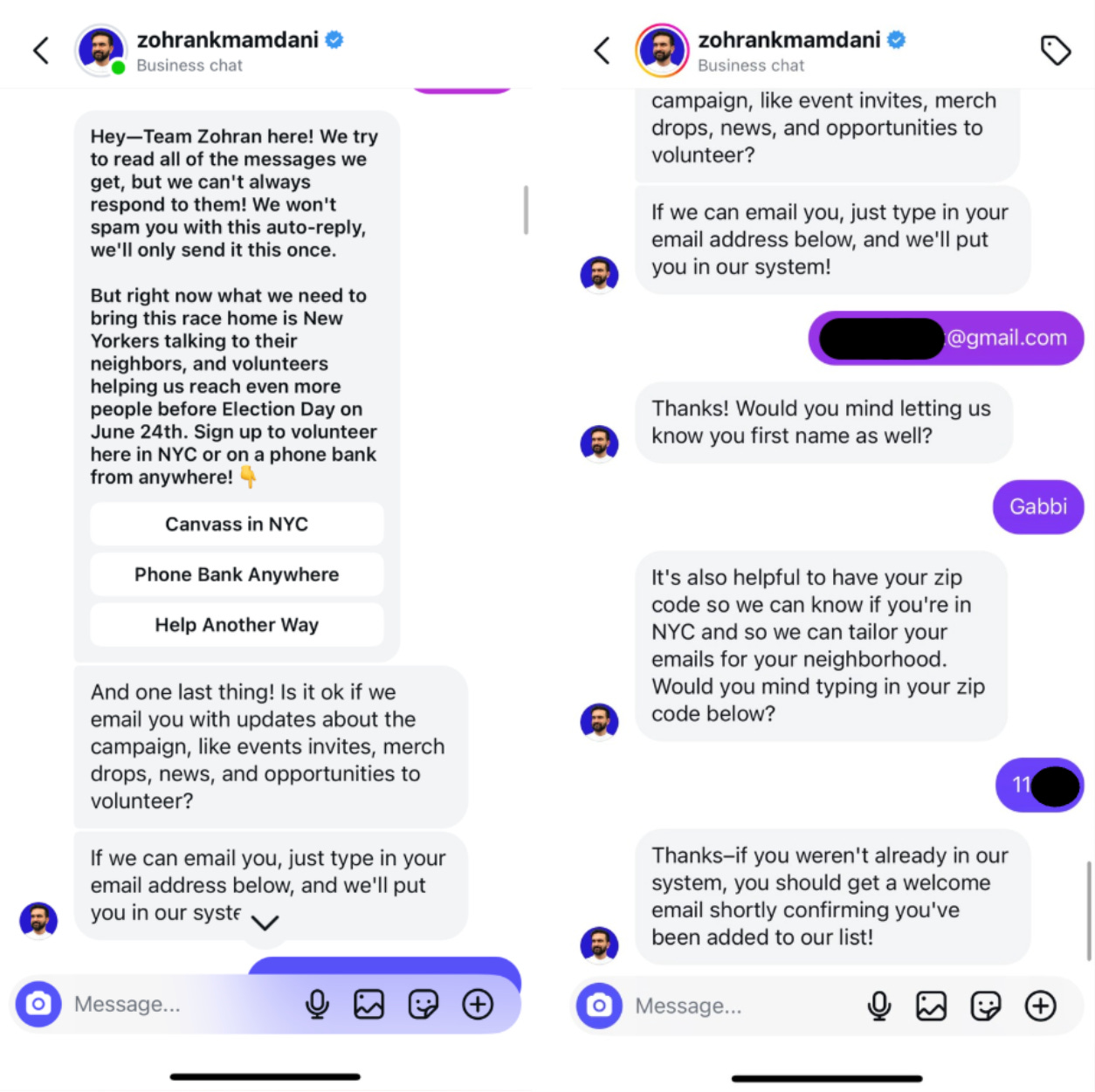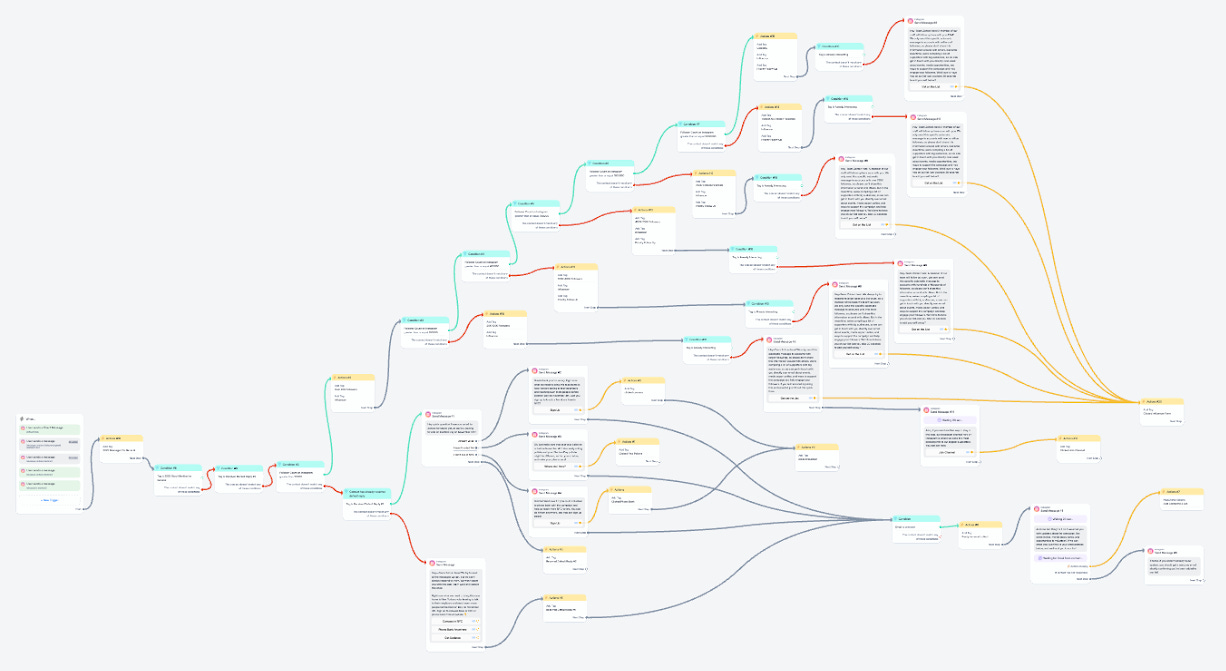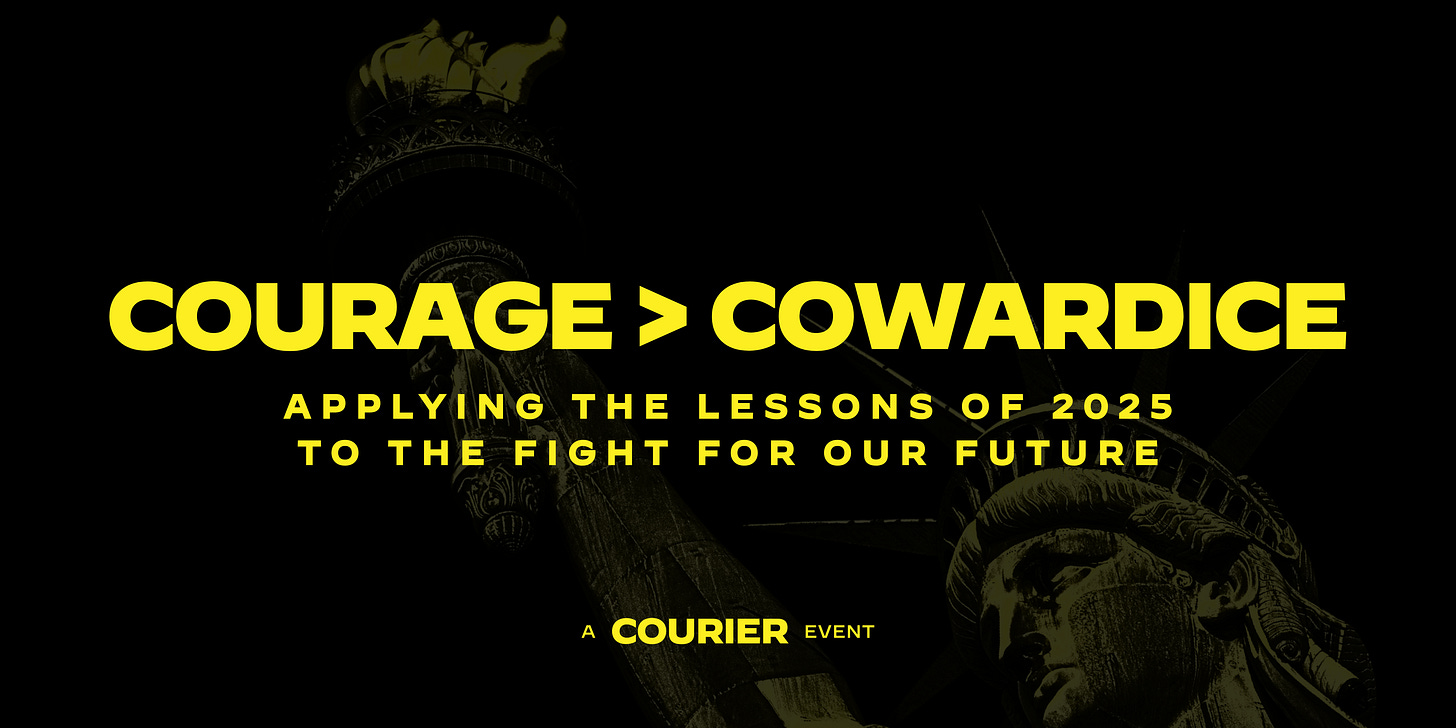How I helped Zohran Mamdani turn 45,000 social media clicks into a real-life army of volunteers
Social media chatbots are worth the hype (I promise).
Hi everyone! I’m Gabriella Zutrau (but people call me Gabbi), and I am a former community organizer and current digital strategy advisor to campaigns and organizations like MoveOn and Zohran Mamdani. I’m a longtime FWIW reader, so I’m excited to be your guest author today. I specialize in organic social media strategy and have spent the past decade helping progressive groups use digital platforms as engines to maximize engagement and growth. (I also run popular pet content accounts for my dog, Edna the Runt).
I’m going to be diving into the chatbot infrastructure that I built for Zohran Mamdani’s mayoral campaign, which generated over 45,000 clicks from DMs, and turned their online energy into offline action, helping build a historic field operation that toppled a political dynasty last Tuesday.
More on that below, but first…
Digital ad spending, by the numbers:
FWIW, U.S. political advertisers spent about $14.7 million on Facebook and Instagram ads last week. Here were the top ten spenders nationwide:
The California Secretary of State Office made a huge last minute voter turnout push on Meta platforms the week of Election Day. To put their nearly $500K spend into perspective: the next-highest SOS office on the list, Minnesota, invested just $19,250.
Meanwhile, political advertisers spent just under $7.7 million on Google and YouTube ads last week. These were the top ten spenders nationwide:
Though ad spend dropped significantly given that most of last week fell post-Election Day, The Safety for All Newsom Ballot Measure Committee maintained its top spot on the list, as it has for 8 of the last 9 weeks. The only exception came the week of September 21, when it was outspent by the anti-Prop 50 Hold Politicians Accountable initiative by $40K.
The DGA and RGA went head-to-head in New Jersey, bracing for what many expected to be a tight, single-digit contest. Ultimately Democrat Mikie Sherrill ended up besting Republican Jack Ciattarelli… by nearly 14%.
On X (formerly Twitter), political advertisers in the U.S. have spent around $10.6 million on ads in 2025. According to X’s political ad disclosure, here are the top spenders year to date:
…and lastly, on Snapchat, political advertisers in the U.S. have spent around $2.7 million on ads in 2025. Here are the top spenders year to date:
How I helped Zohran Mamdani turn social media DMs into volunteers
Eight months ago, when I sensed that Zohran Mamdani’s Instagram was about to experience an explosion of growth and engagement, I knew that the question the campaign was urgently asking itself was the same question all of my clients eventually ask.
“How do we get these people off of Instagram, onto our volunteer list, and out to the polls?”
Getting people off of Instagram, whether to buy your protein powder or sign up for a phone bank, has always been a headache for those of us who work in marketing and digital organizing because of the platform’s distinct lack of clickable links in captions. Most campaigns are stuck asking people to “hit the link in bio,” a request that few users are likely to do.
That’s where social media chatbots come in. When chatbots like Manychat first hit the Instagram scene a few years ago, I mostly saw creators and small businesses using it to automate sending links to people when they commented a specific keyword, e.g. “comment pilates and I’ll send you my e-book on how to get ripped abs by summer.” Chatbots are a low-friction means of getting people to your destination link without making them jump through hoops to hit the link in bio,
When I reached out to the Mamdani campaign about how I’d been using chatbots in politics and advocacy, they immediately saw the value, even though it had never been used on an electoral campaign before. I began building their chatbot infrastructure then and there.
From May to November, we sent over 144,000 messages, generating over 45,000 clicks.
While the infrastructure was dynamic and got tweaked constantly as we adjusted CTAs and received data and user feedback, there were four four core types of flows we used.
1: The Comment-to-DM
Rather than saying “hit the link in bio,” we asked people to comment a specific word or phrase like “CanvassNow” or “ratio” to receive a link sent straight to their DMs. Our average click rate on these messages was over 70%.
2: Default Reply
We responded to hundreds of daily DMs with an ask to donate, volunteer, take a pledge, and/or register to vote. Rather than meeting our supporters with silence in the DMs, we met them with concrete actions they could take.
3: Story Mention Reply
We responded to the tens of thousands of times that someone mentioned @zohrankmamdani in their stories.
4: Email Collection
We were able to automatically capture emails natively inside Instagram’s direct messaging platform, without the user needing to click through to any website. In Facebook Messenger, 23% of recipients handed over their email address right in DMs.
Bonus: Scaling Creator Engagement
In the final weeks, we used the chatbot to help boost our creator and influencer engagement. Each of our reply flows were set up to count how many followers the messaging account had. Each of them received a tailored message customized for accounts in their follower count range. These messages contained a link to a form where they could sign up to join our exclusive list of creators and new media supporters.
These flows I set up were only a small piece of the expansive creator program that Emilia Rowland led on the campaign, but sending these messages allowed creators and influencers, with as few as 20K followers and as many as 35 million, to opt in and get added to a list outside of social media, where they could be further organized.
Usually when I explain all this to people, their next question is “don’t people find this spammy and annoying–especially influencers receiving automated messages?”
And my answer is this: some people find it annoying, but when users are the ones initiating the interaction, it’s inherently far less spammy than most other campaign outreach they’ve experienced. Ultimately, the results speak for themselves.
Manychat just rolled out a suite of new features that I know will make a big difference for campaigns in 2026. I aim to make each of my flows less and less spammy over time by tweaking the logic, tagging contacts, and using conditional flows (i.e. conditions that say “if we have this contact’s email already, don’t send them the email collection message” or “if this contact is tagged as an NYC Local, send them Message A instead of Message B.”).
The big takeaway here is that if used correctly, chatbots can solve a structural problem campaigns face on Instagram. The platform is designed to keep users inside its walls, but chatbots are the low-friction workaround to convert online engagement into meaningful action.
To hear more, sign up for my email list, or follow me on my IG account where I shitpost and give out free digital advice, @extremelyonlinefriend.
Join COURIER on December 11 for an end-of-the year soirée uplifting some of our nations’ key voices of resistance as we raise a glass to the courage it’ll take to keep showing up.
Enjoy free food and drinks as we come together for thoughtful and unflinching dialogue with journalists, creators, and advocates. Courage > Cowardice will dive into what history has taught us, and how we turn those lessons into action for the battles to come. Your voice matters. Be a part of the conversation.
Celebrate voices of resistance with COURIER. Reflect on 2025’s lessons and explore how courage drives the fights ahead.
That’s it for FWIW this week. This email was sent to 24,724 readers. If you enjoy reading this newsletter each week, would you mind sharing it on X/Twitter, Threads, or Bluesky? Have a tip, idea, or feedback? Reply directly to this email.
Support COURIER’s Journalism
Democracy dies behind a paywall, so our journalism is and will always be free to our readers.
But to be able to make that commitment, we need support from folks like you who believe in our mission and support our unique model.





